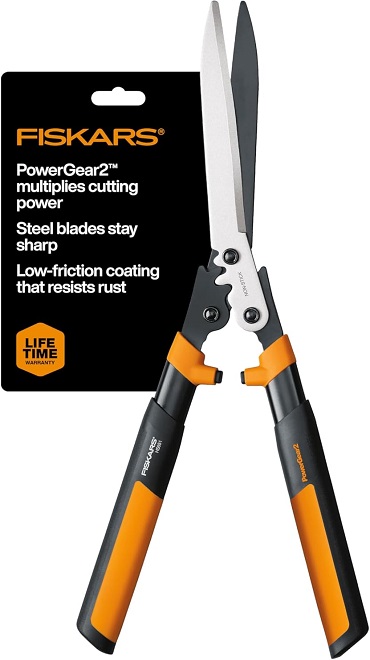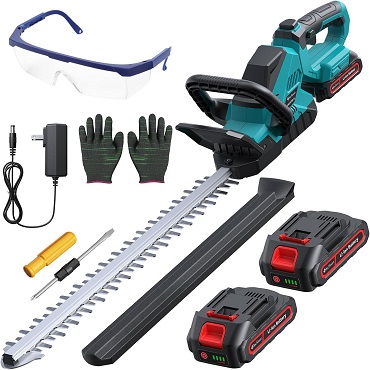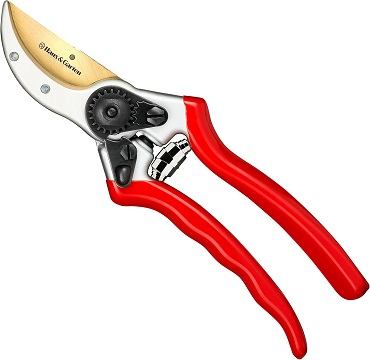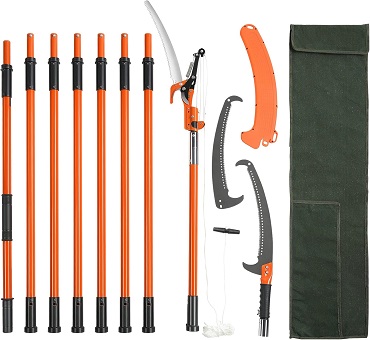Tree trimming and pruning are both methods of cutting and shaping trees, but they serve different purposes. Trimming usually focuses on maintaining a tree’s size and shape, while pruning is more about improving the tree’s health and structure. Both practices play important roles in tree maintenance, contributing to the overall health and appearance of trees in our yards and public spaces.
Regular tree care through trimming and pruning offers many benefits. It helps trees stay healthy, look better, and can even make them safer by removing potentially dangerous branches. Understanding the differences between these two practices can help you take better care of your trees and know when to call in a professional.
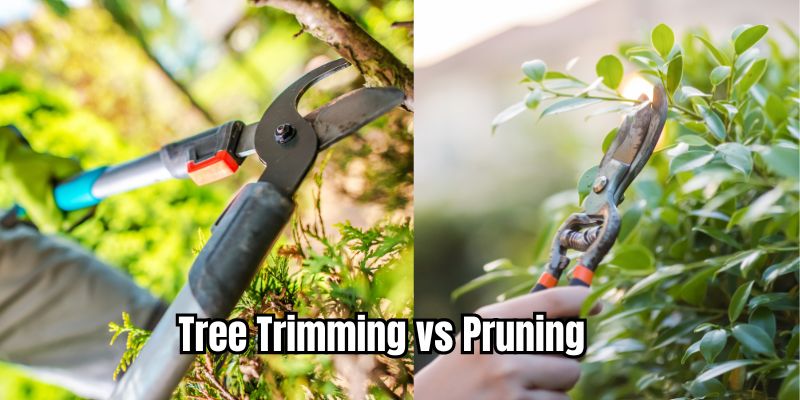
Tree Trimming: The Basics
Tree trimming is a more general practice that mainly focuses on controlling a tree’s size and shape. It’s often done for aesthetic reasons or to keep trees from interfering with buildings, power lines, or other structures.
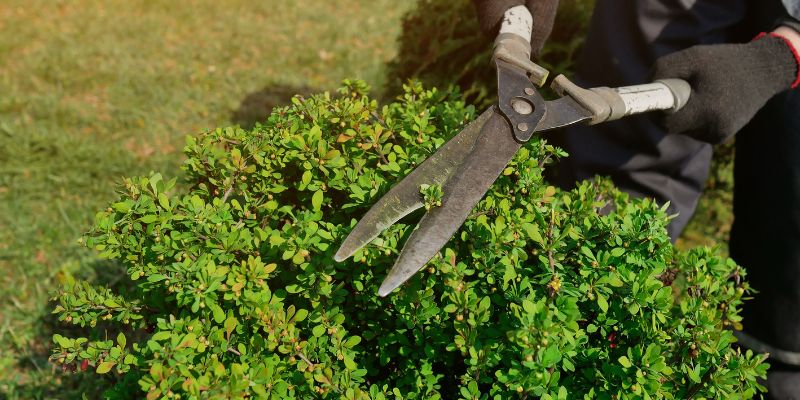
Purpose of Tree Trimming
Managing overgrown branches: As trees grow, their branches can become too long or thick, making the tree look messy or unbalanced. Trimming helps control this overgrowth, keeping the tree’s size in check and maintaining its desired shape.
Removing hazardous branches: Sometimes, branches can grow in ways that make them dangerous. They might hang over roofs, obstruct views for drivers, or be at risk of falling during storms. Trimming these branches reduces these risks and makes the area around the tree safer.
Improving tree appearance for aesthetic reasons: Many people trim their trees simply because they want them to look neat and tidy. Regular trimming can give trees a more manicured appearance, which can improve the overall look of a yard or garden.
Common Tools Used in Tree Trimming
Hedge shears: These are large, scissor-like tools used for trimming smaller branches and shaping hedges. They’re great for quick, straight cuts on thin branches.
Power Hedge Trimmers: Power trimmers, which can be electric or gas-powered, are useful for larger trimming jobs. They can handle thicker branches and make the work go faster, especially when trimming tall or wide trees.
Pruning: A More Precise Approach
Pruning is a more careful and specific practice than trimming. It involves selectively removing certain parts of a tree to improve its health, structure, and appearance.
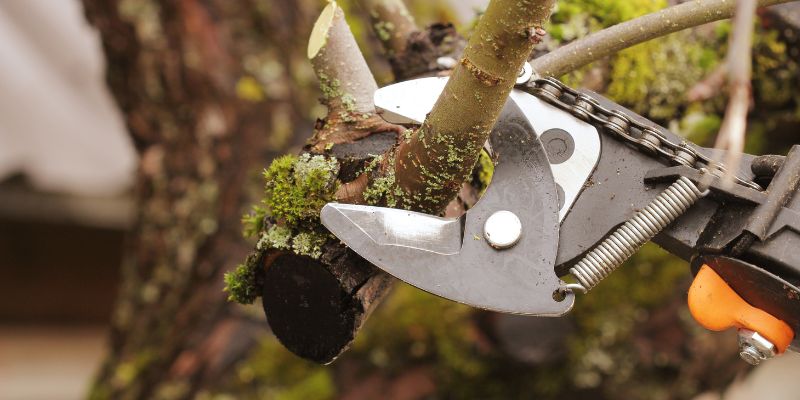
Definition and Purpose Of Pruning
Pruning is the targeted removal of specific branches or stems from a tree. Unlike trimming, which often involves shaping the whole tree, pruning focuses on removing particular branches for specific reasons. The main goals of pruning are to improve the tree’s health, encourage better growth, and enhance its natural shape.
Types of Branches Targeted in Pruning
Dead branches: These branches no longer grow leaves and don’t contribute to the tree’s health. Removing them can improve the tree’s appearance and prevent potential hazards.
Diseased branches: Branches affected by disease can spread the problem to other parts of the tree. Pruning these branches can stop the spread of disease and improve the tree’s overall health.
Damaged branches: Branches that have been broken or damaged by storms, animals, or other factors can be removed through pruning. This helps the tree heal and prevents further damage.
Unruly branches: Sometimes branches grow in odd directions or cross over other branches. Pruning these can improve the tree’s structure and appearance.
Tools Used in Pruning
Pruning shears: These hand-held tools are used for cutting small branches and twigs. They allow for precise cuts on branches up to about 3/4 inch in diameter.
Pole Saw: For thicker or higher branches, a pole saw works far better than regular pruning tools. It extends your reach, letting you trim tall trees without using a ladder. Cordless models add more flexibility, allowing you to move freely around your yard. If you’re considering one, check out 10 Best Cordless Pole Saws for detailed recommendations and performance comparisons.
Key Differences Between Trimming and Pruning
While both trimming and pruning involve cutting parts of a tree, they differ in their goals, techniques, and how often they’re done.
Objectives
The main goal of trimming is to control the size and shape of a tree. It’s often done to keep trees from growing too large for their space or to create a specific look.
Pruning focuses more on the tree’s health and structure. By removing specific branches, pruning can help a tree grow stronger and healthier.
Techniques
Trimming: general cutting and shaping: Trimming usually involves cutting back the outer parts of the tree to create a desired shape. It’s less precise than pruning and often affects a larger portion of the tree.
Pruning: selective removal and precise cuts: Pruning is more selective, targeting specific branches for removal. It requires more knowledge about tree biology and growth patterns to make the right cuts in the right places.
Frequency
Trimming: more frequent maintenance: Trees often need trimming more often, sometimes annually or even more frequently for fast-growing species or to maintain a specific shape.
Pruning: less frequent, often seasonal: Pruning is typically done less often, sometimes only every few years depending on the tree species and its needs. It’s often done during specific seasons when the tree is dormant or after flowering.
Benefits of Proper Pruning
Proper pruning offers many benefits for trees, improving their health, appearance, and safety.
Improved Tree Health
Enhanced nutrient absorption: By removing dead or unnecessary branches, pruning allows the tree to direct more nutrients to its healthy parts, promoting better growth.
Better moisture retention: Pruning can improve a tree’s ability to retain moisture by reducing the number of leaves that lose water through transpiration.
Increased pest protection: Regular pruning can help spot and remove pest-infested branches early, preventing the spread of infestations.
Aesthetic Improvements
Enhanced tree structure: Pruning helps maintain or improve a tree’s natural shape, leading to a more pleasing appearance.
Improved growth patterns: By removing crossing or rubbing branches, pruning encourages healthier growth patterns.
Better overall appearance: A well-pruned tree often looks healthier and more attractive than an unpruned one.
Safety Considerations
- Pruning gets rid of dead, diseased, or weakened branches that could fall and cause injury or property damage.
- By improving the tree’s structure, pruning can make the tree more stable and less likely to lose branches during storms.
Improved Fruit Production for Fruit Trees
For fruit trees, proper pruning can lead to better fruit production. It allows more sunlight to reach the tree’s center, promotes the growth of fruit-bearing branches, and can result in larger, higher-quality fruit.
When to Trim vs When to Prune
Knowing when to trim and when to prune can help you care for your trees more effectively.
Seasonal Considerations
Winter pruning benefits: Many trees benefit from pruning in late winter when they’re dormant. This causes less stress to the tree and can promote vigorous spring growth.
Spring pruning for flowering trees: Trees that bloom in spring should be pruned right after they finish flowering to avoid cutting off next year’s flower buds.
Tree-Specific Factors
Tree size and age: Young trees often need more frequent pruning to establish a good structure, while mature trees may need less frequent, but more extensive pruning.
Tree species: Different types of trees have different pruning needs. For example, fruit trees often need annual pruning, while many shade trees can go several years between prunings.
Specific Objectives
Light penetration and air circulation: Pruning to thin out dense canopies can improve light penetration and air circulation, which benefits the tree’s health.
Overgrowth management: Regular trimming can keep fast-growing trees from outgrowing their space or interfering with structures or power lines.
Removal of suckers and water sprouts: These fast-growing shoots that appear at the base of the tree or on branches can be removed through pruning to maintain the tree’s shape and direct energy to more important growth.
Best Practices for Tree Trimming and Pruning
To get the best results and avoid harming your trees, it’s important to follow good practices when trimming or pruning.
Proper Pruning Timing
The best time to prune most trees is during their dormant season, usually late winter. However, if you’re removing dead, damaged, or diseased branches, this can be done at any time of year. For flowering trees, it’s often best to prune right after they finish blooming.
Read About: How To Prune a Tree?
Correct Techniques for Branch Removal
When pruning, make clean cuts just outside the branch collar (the swollen area where the branch meets the trunk). Don’t leave stubs, as these can lead to decay. For larger branches, use the three-cut method to prevent bark tearing:
- Make a small cut on the underside of the branch, about 1-2 feet from the trunk.
- Make a second cut from the top of the branch, slightly farther out from the first cut.
- Once the branch falls, make the final cut just outside the branch collar.
Tools and Safety Equipment
Use clean, sharp tools to make clean cuts that will heal quickly. Disinfect tools between cuts when dealing with diseased branches to prevent spreading the problem. Always wear safety gear, including gloves, safety glasses, and a hard hat for larger jobs.
When to Consult an Arborist
While many trimming and light pruning jobs can be done by homeowners, it’s often best to call in a professional arborist for:
- Large trees
- Trees near power lines
- Removal of large branches
- Any job that requires climbing or using a chainsaw while on a ladder
Arborists have the knowledge, skills, and equipment to safely handle these more challenging tasks.
The Impact of Trimming and Pruning on Landscape Design
Well-maintained trees can greatly enhance the look of any landscape.
Enhancing Curb Appeal
Properly trimmed and pruned trees can significantly improve a property’s curb appeal. They create a neat, cared-for appearance that can make a home or business more attractive.
Importance in the Landscape Industry
Tree care is a key part of landscape maintenance. Professional landscapers use trimming and pruning to create beautiful, healthy landscapes for their clients. These practices help maintain the desired look of a landscape over time and can even increase property values.
Wrapping Up
Tree trimming and pruning are both valuable practices in tree care, each with its own purpose and benefits. Trimming mainly controls a tree’s size and shape, often for aesthetic reasons or to manage overgrowth. Pruning, on the other hand, focuses more on improving a tree’s health, structure, and safety by selectively removing specific branches.
Both practices contribute to the overall well-being of trees. Regular trimming keeps trees looking neat and prevents them from interfering with structures or utilities. Proper pruning promotes tree health, enhances growth patterns, and can even improve fruit production in fruit trees.
Understanding when to trim and when to prune is key to effective tree care. Factors like the tree’s species, age, and specific needs should guide these decisions. While some trimming and pruning can be done by homeowners, it’s often best to consult with a professional arborist for more complex jobs or when dealing with large or valuable trees.
By using the right techniques and tools, and considering the specific needs of each tree, you can help your trees thrive. Well-maintained trees not only look better but are also healthier and safer, adding value to any landscape.
Next Steps
Now that you understand the differences between tree trimming and pruning, take a look at the trees in your yard. Do any of them need attention? Consider these steps:
Assess your trees: Look for dead, damaged, or diseased branches that might need pruning. Check if any trees have grown too large for their space and might need trimming.
Research your tree species: Different types of trees have different care needs. Learn about the best practices for the specific trees in your yard.
Plan your approach: Decide which trees you can safely care for yourself and which might need professional help.
Get the right tools: If you’re going to do some trimming or light pruning yourself, make sure you have the proper tools for the job.
Consider professional help: For large trees, extensive pruning, or any job that seems risky, it’s best to call in a certified arborist. They can assess your trees’ needs and perform any necessary work safely and effectively.
Remember, regular care through proper trimming and pruning can help your trees stay healthy, look great, and add beauty to your landscape for years to come.

